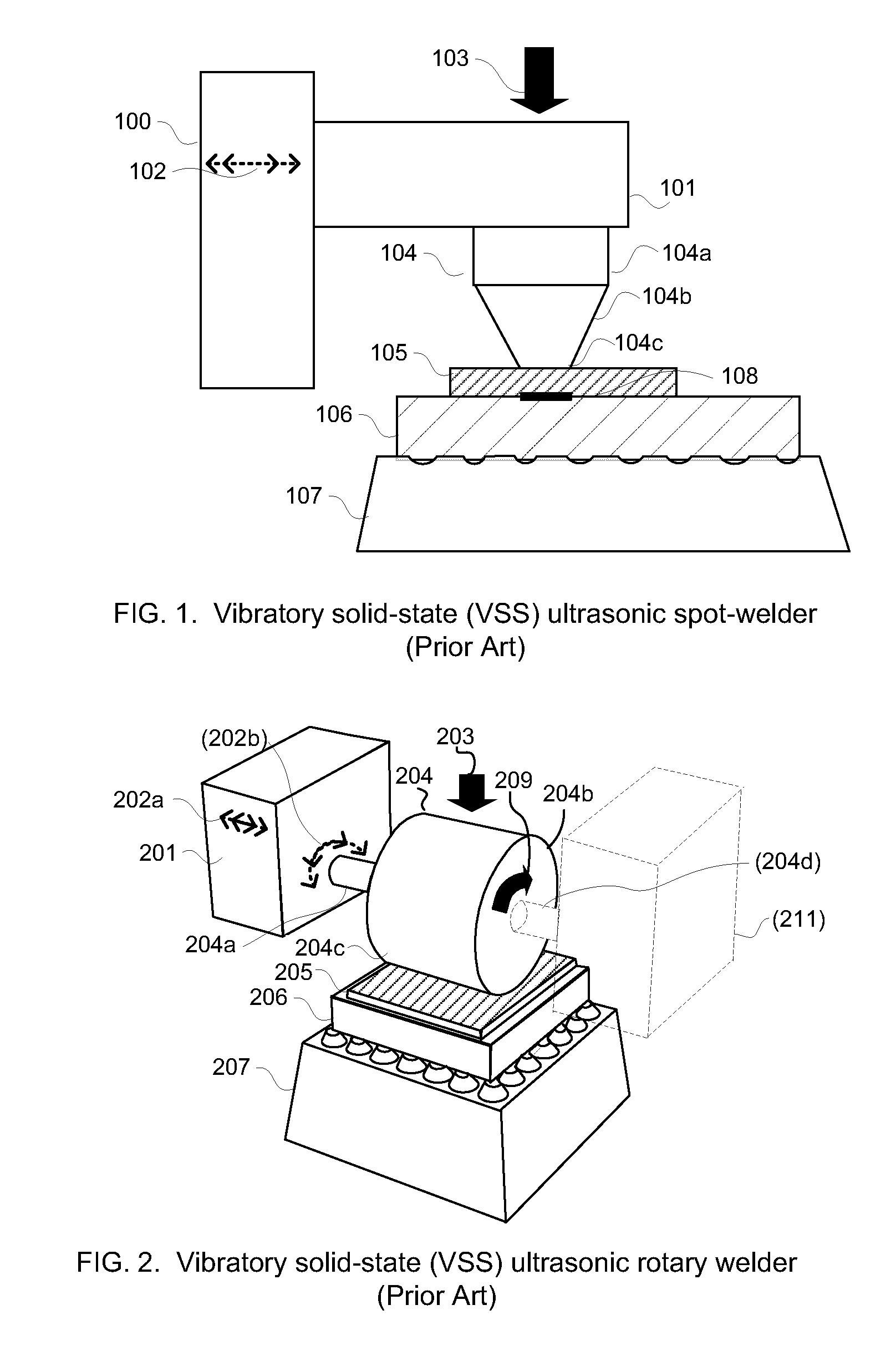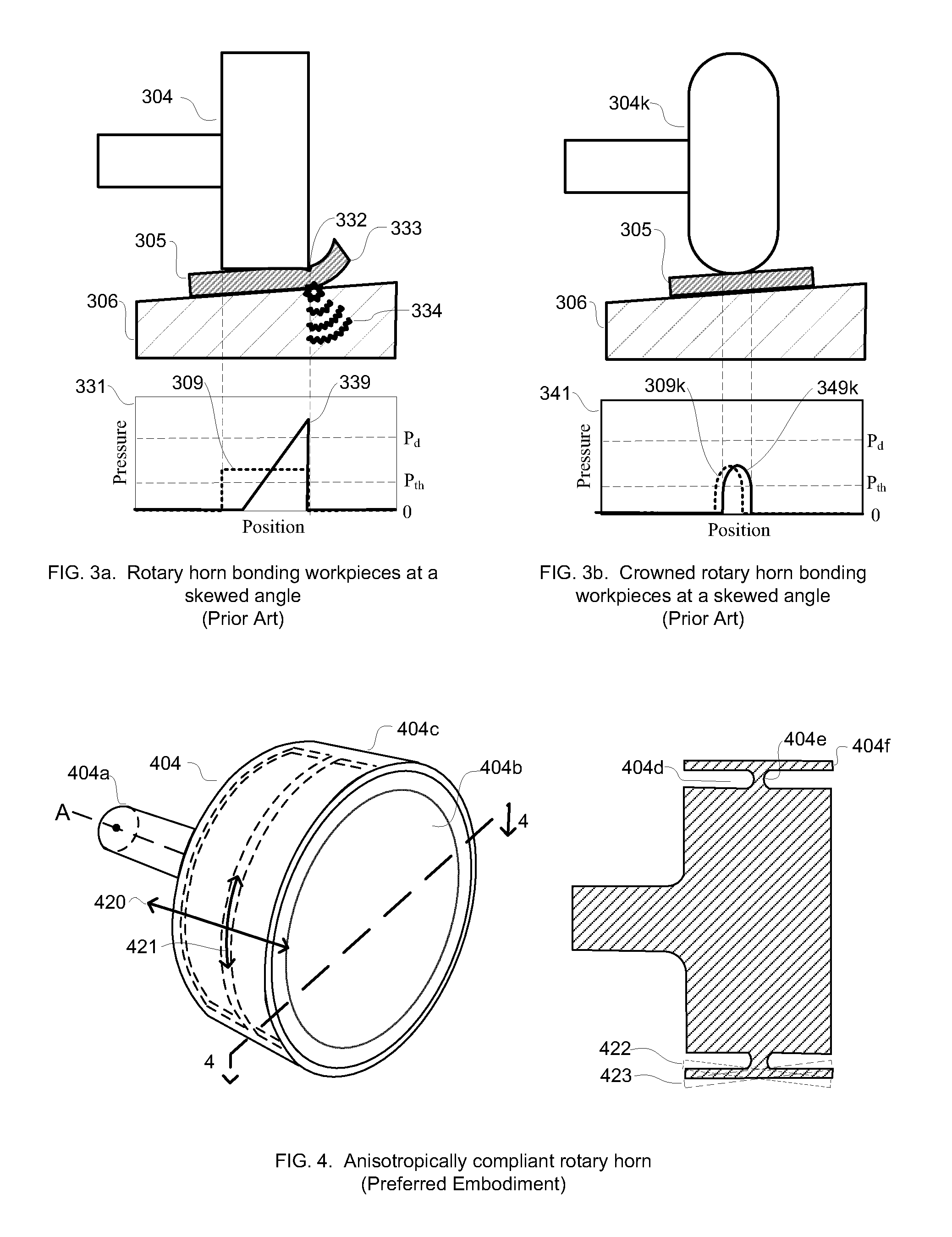Anisotropically compliant horns for ultrasonic vibratory solid-state bonding
a vibratory solid-state bonding and anisotropic compliant technology, applied in the field of vibration solid-state bonding, can solve the problems of electrical components being damaged, thermoplastic usw solutions not necessarily effective for vss usw, and fundamentally dissimilar physics, so as to reduce the bond-interface area, reduce damping and compliance losses, and make damage-free bonds of delicate workpieces.
- Summary
- Abstract
- Description
- Claims
- Application Information
AI Technical Summary
Benefits of technology
Problems solved by technology
Method used
Image
Examples
Embodiment Construction
[0059]The self-leveling ultrasonic horns of this invention have built-in anisotropically compliant members allowing their toolfaces to flex when pressed down onto a workpiece until the toolface conforms to the workpiece surface. Thus, even if one of the invented horns engages workpieces at a skewed angle, the entire width of the toolface contacts the workpiece and forms a bond of the full intended width, and the bonding energy is equalized across the bond area so that no localized damage zones are created.
[0060]Commercial ultrasonic actuators can supply ultrasonic wave amplitudes far in excess of what is needed to form a strong, damage-free VSS bond between a foil and a thin-film-coated substrate. Therefore, maximum efficiency is not a major concern and some damping can be tolerated. However, because the compliance of the invented toolfaces is anisotropic, stiffness is maintained in the direction of vibration, minimizing damping in all embodiments and potential delamination of multi...
PUM
| Property | Measurement | Unit |
|---|---|---|
| Angle | aaaaa | aaaaa |
| Area | aaaaa | aaaaa |
| Pressure | aaaaa | aaaaa |
Abstract
Description
Claims
Application Information
 Login to View More
Login to View More - R&D
- Intellectual Property
- Life Sciences
- Materials
- Tech Scout
- Unparalleled Data Quality
- Higher Quality Content
- 60% Fewer Hallucinations
Browse by: Latest US Patents, China's latest patents, Technical Efficacy Thesaurus, Application Domain, Technology Topic, Popular Technical Reports.
© 2025 PatSnap. All rights reserved.Legal|Privacy policy|Modern Slavery Act Transparency Statement|Sitemap|About US| Contact US: help@patsnap.com



